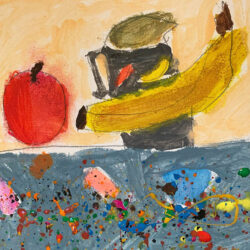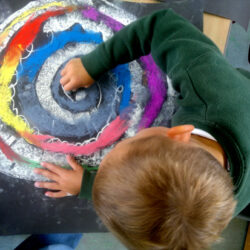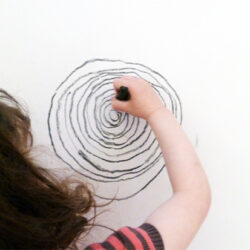In this post AccessArt team member Rachel demonstrates an activity that introduces both observational and imaginative drawing when looking at sea shells and pebbles. The aim of the activity is to engage with these contrasting drawings methods and to compare and observe the results.
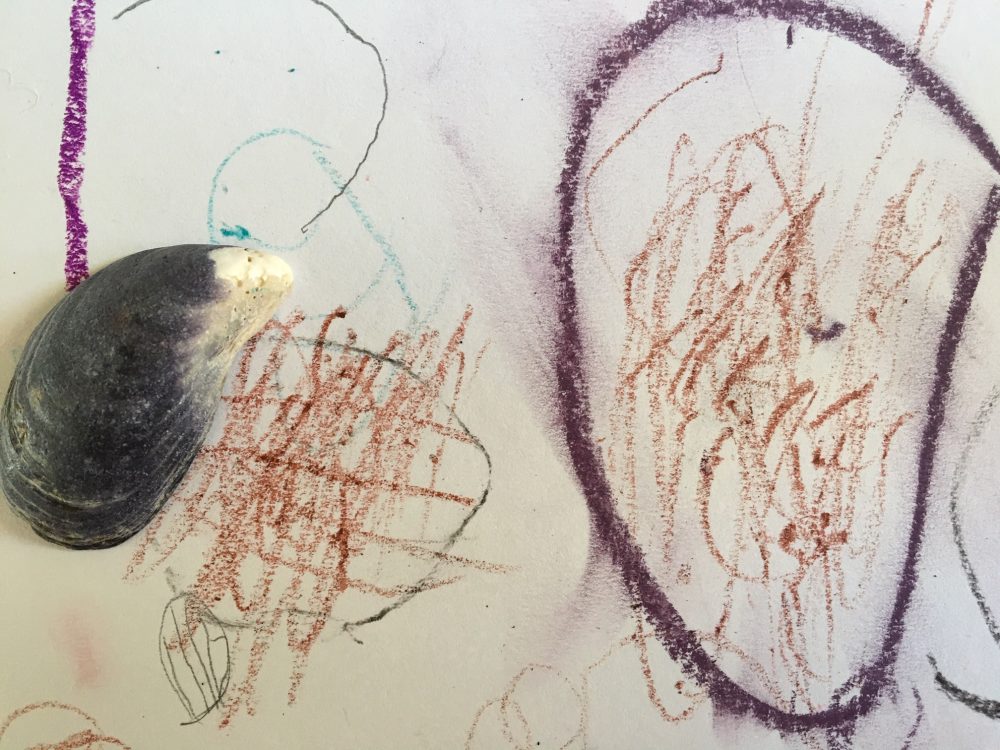
This activity was delivered over two sessions during ‘lockdown’ and forms a ‘table top’ collection for the Early Years age group, but the process and methods used are very much transferable to older age groups.
You will need:
- A selection of sea shells and pebbles
- Drawing paper, preferably A3 or larger
- A range of drawing and mark making materials (soft pencils, chalks, pastels, wax crayons -whatever you have lying around and the more choice the better!)
Session One: Observing Shells
Place your collection of shells and pebbles in front of you and take a few moments to observe their shape, texture and colour. What differences can you see? How many colours can you count on each one? How do the upper and under sides compare?
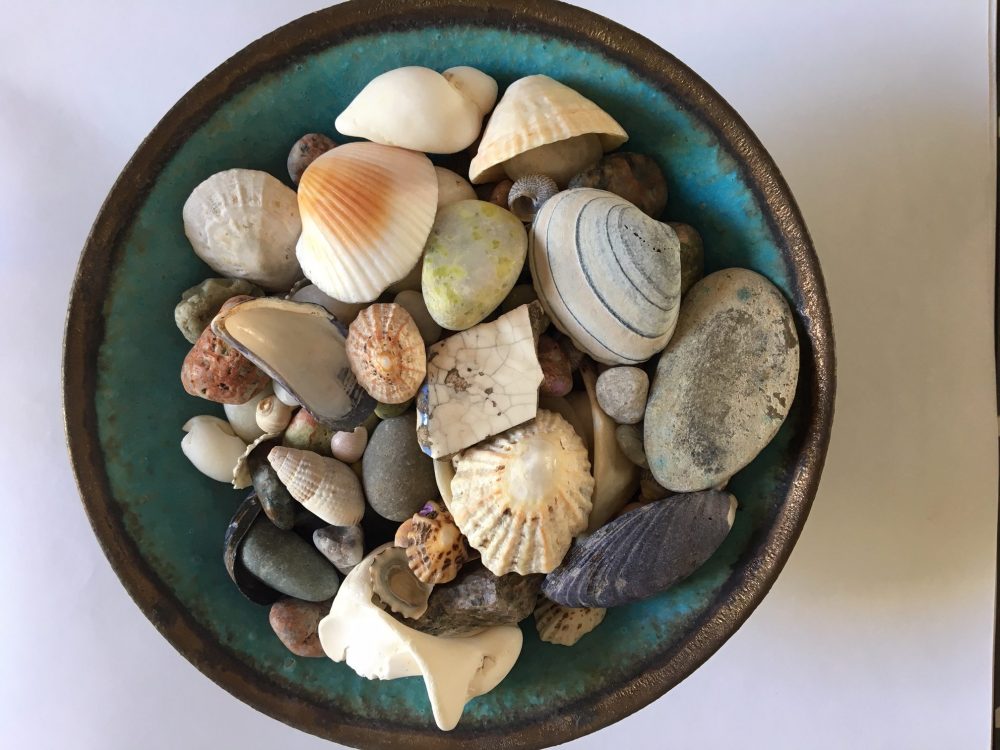
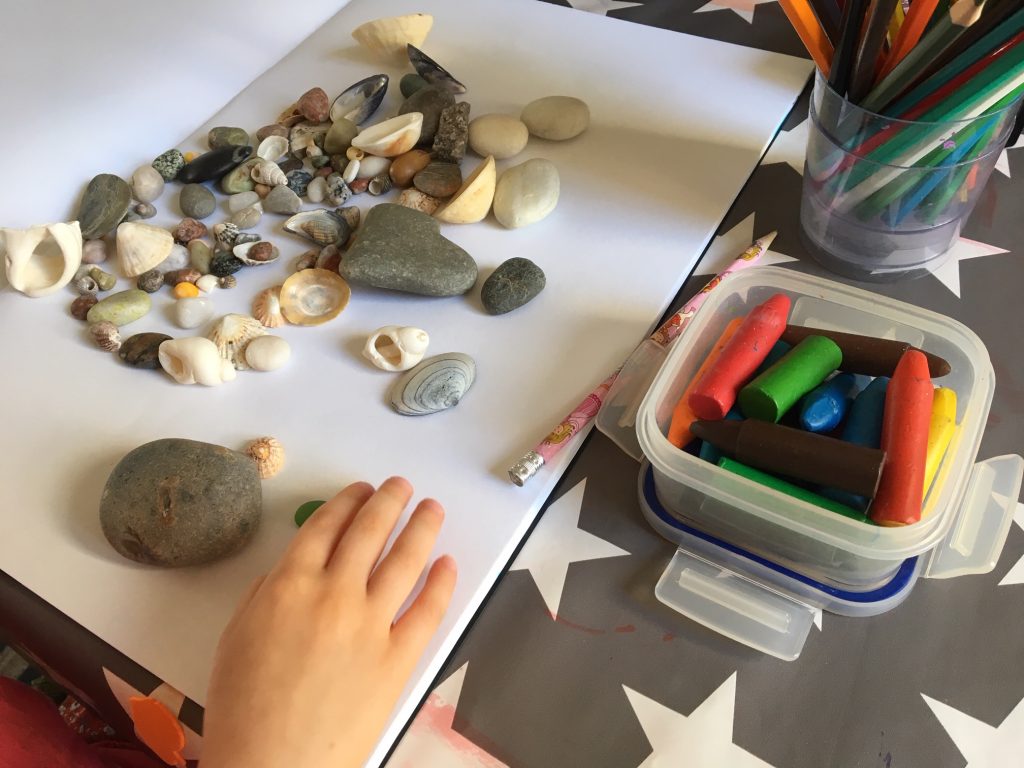
Move on by asking your child to select three or four shells that they find particularly interesting. If they find this hard, or would rather choose a larger number then that’s fine too – keep it open.
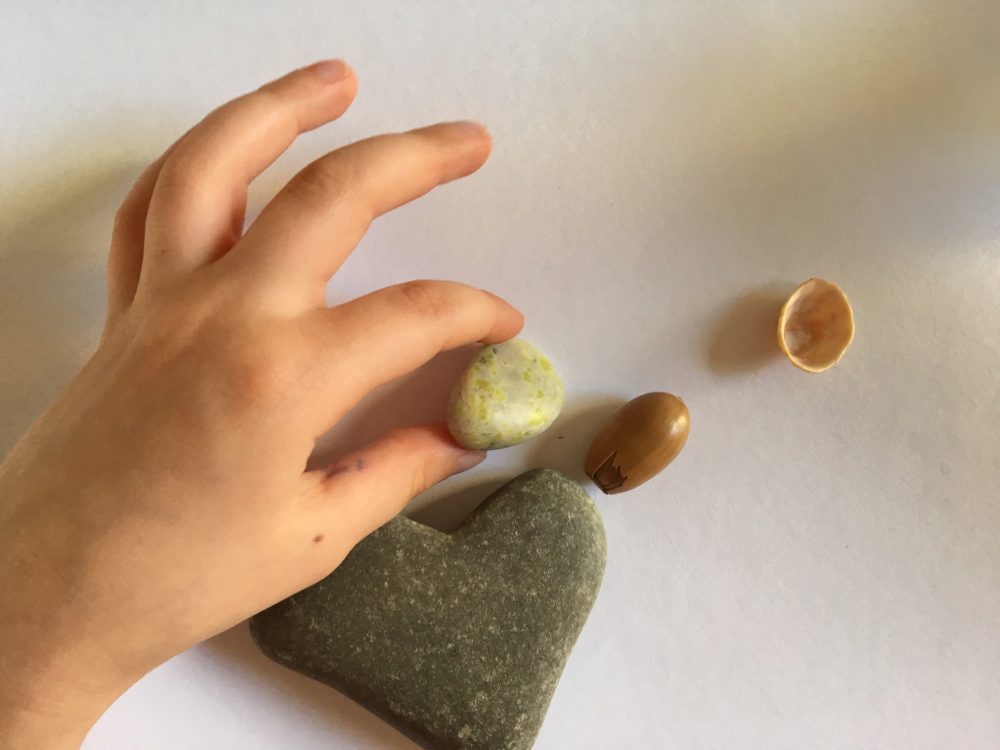
Arrange the shells in front of you on your paper or sketchbook and begin some early observational drawing- or “draw what you see”. Encourage the use of different materials to see what effects can be created.
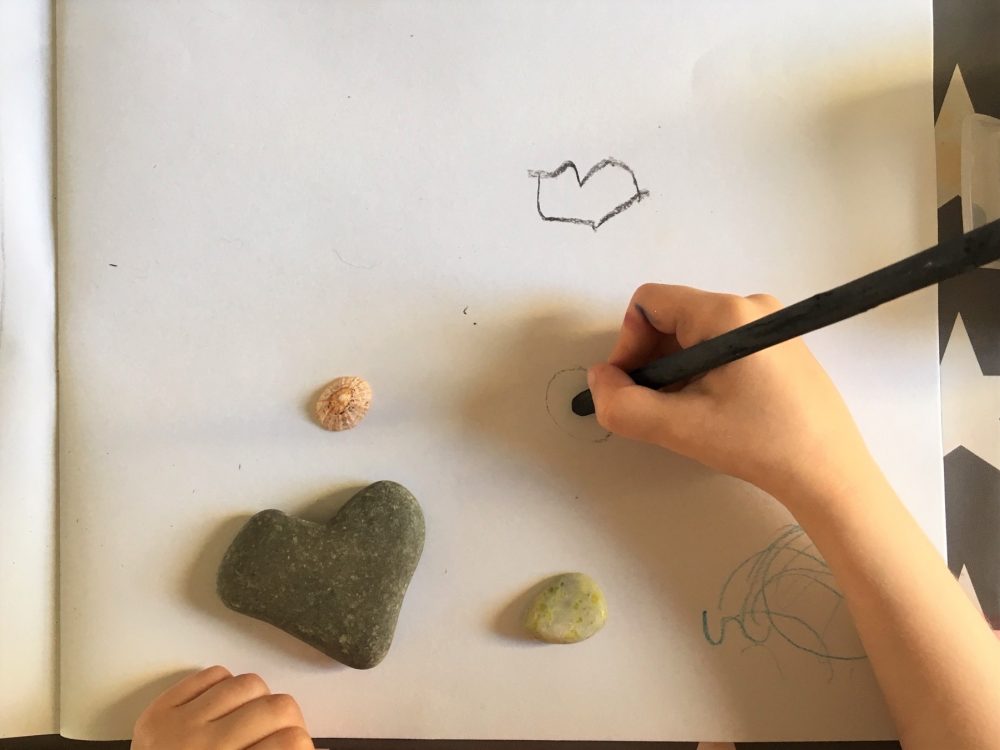
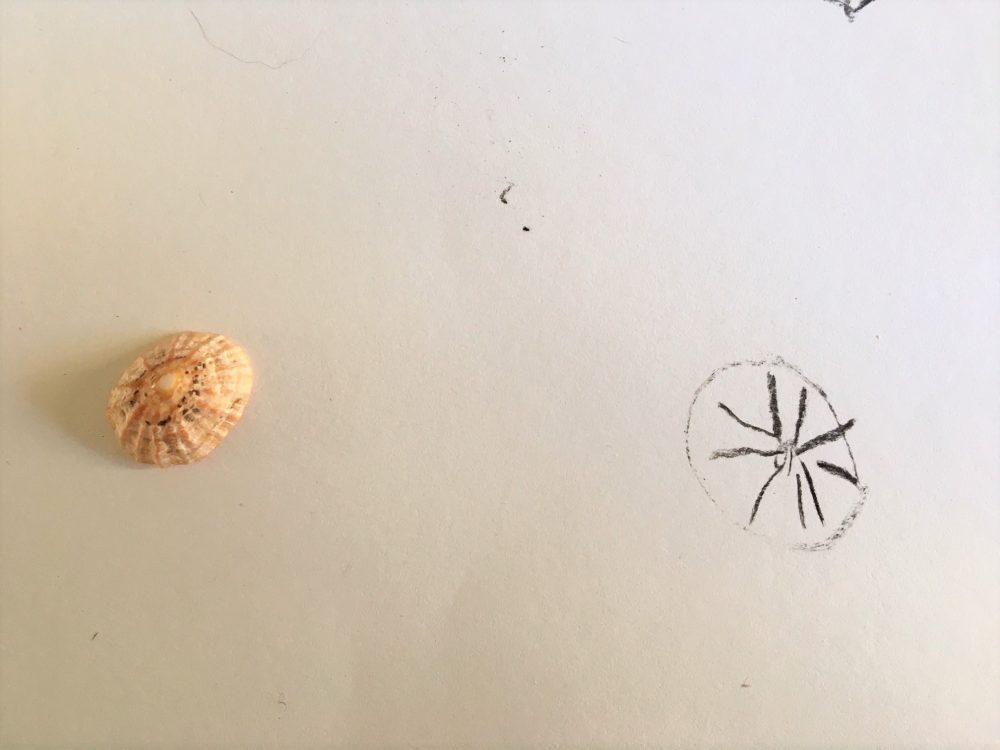
See what your child’s instinct is in terms of how they begin their drawing. If they first draw small, and replicate the real size of the shell – encourage them to go bigger.
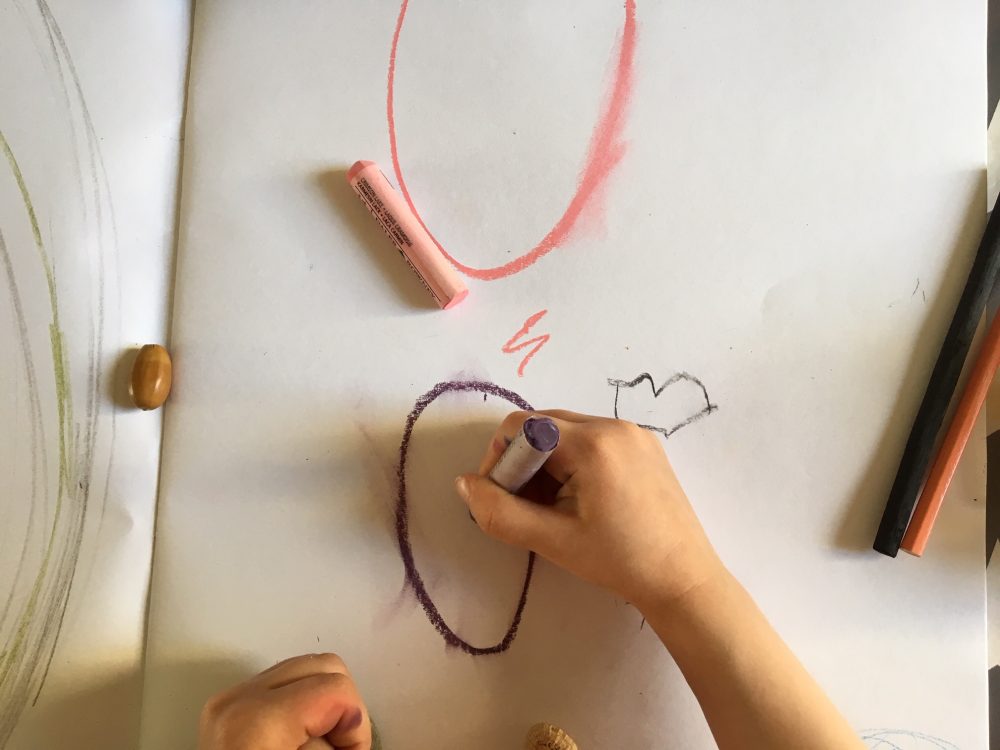
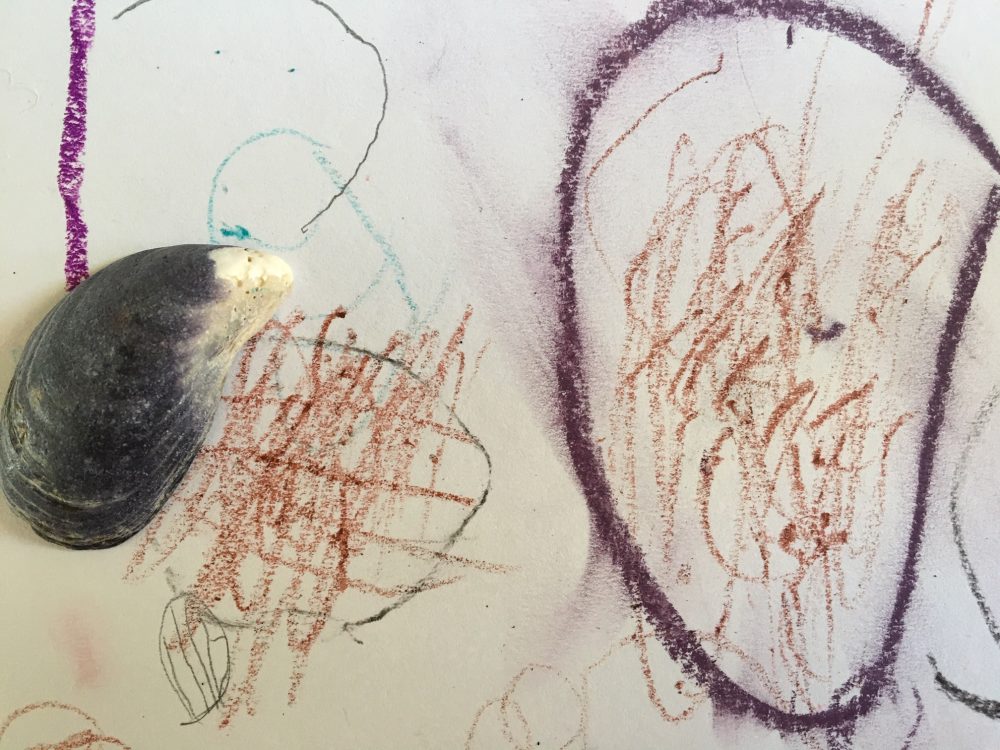
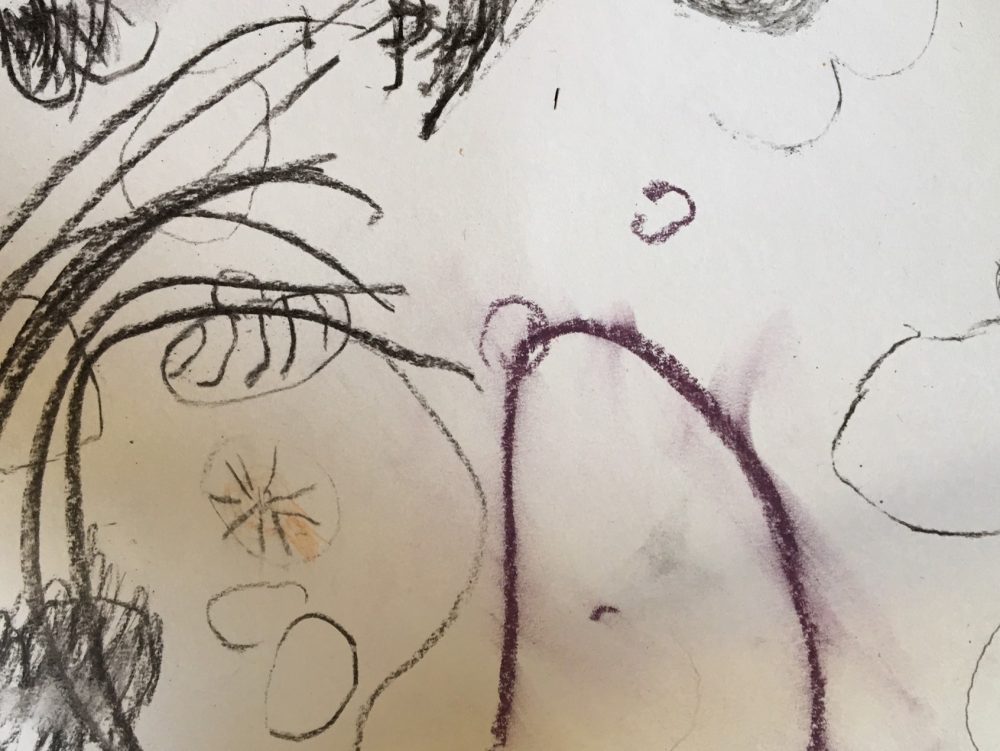
Working across existing marks and creating overlapping shapes is fine. The objective is certainly to introduce the concept of observation and careful looking, but time and space to explore the page and available materials is equally important!
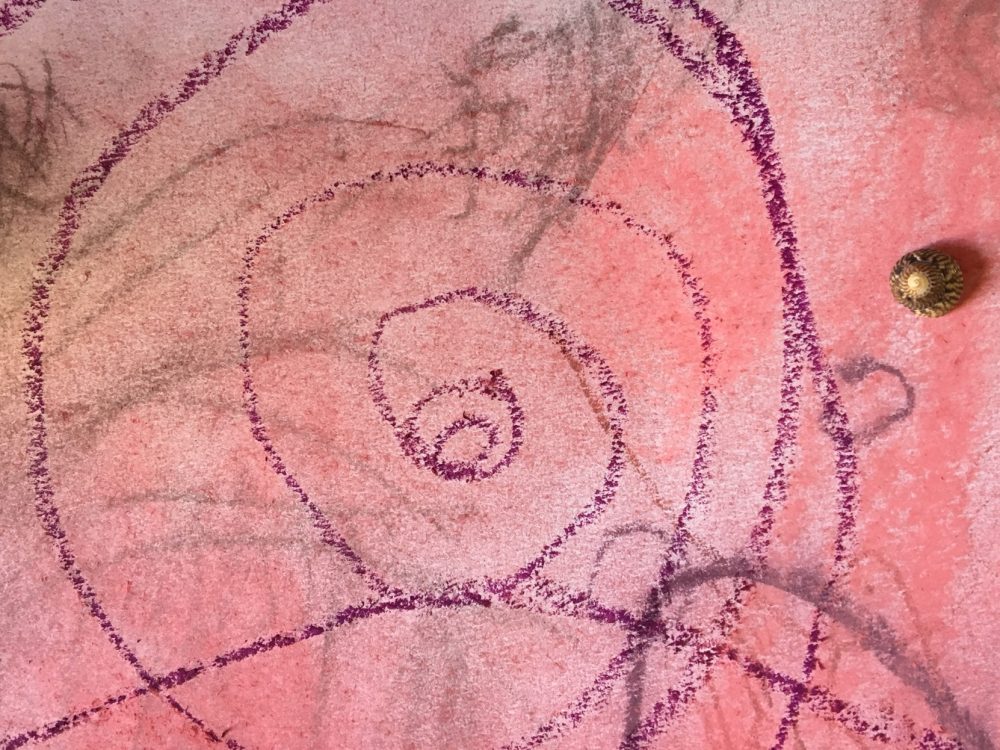
To keep engagement up and to provide some social learning to the activity – have a go yourself. It doesn’t matter if drawing isn’t something you feel confident with!
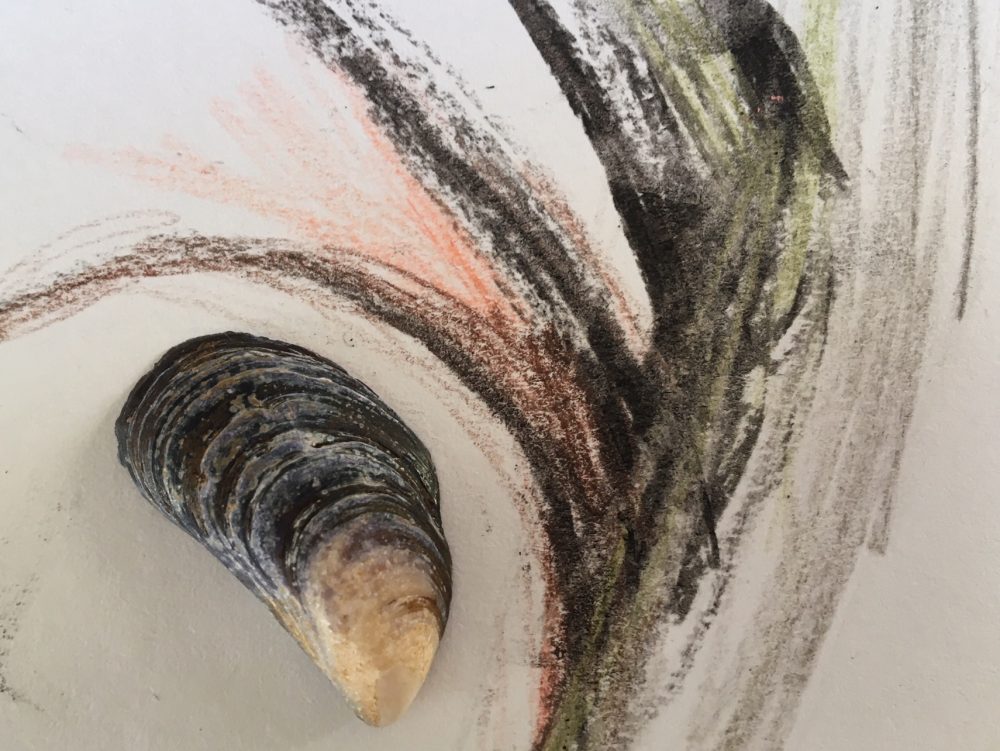
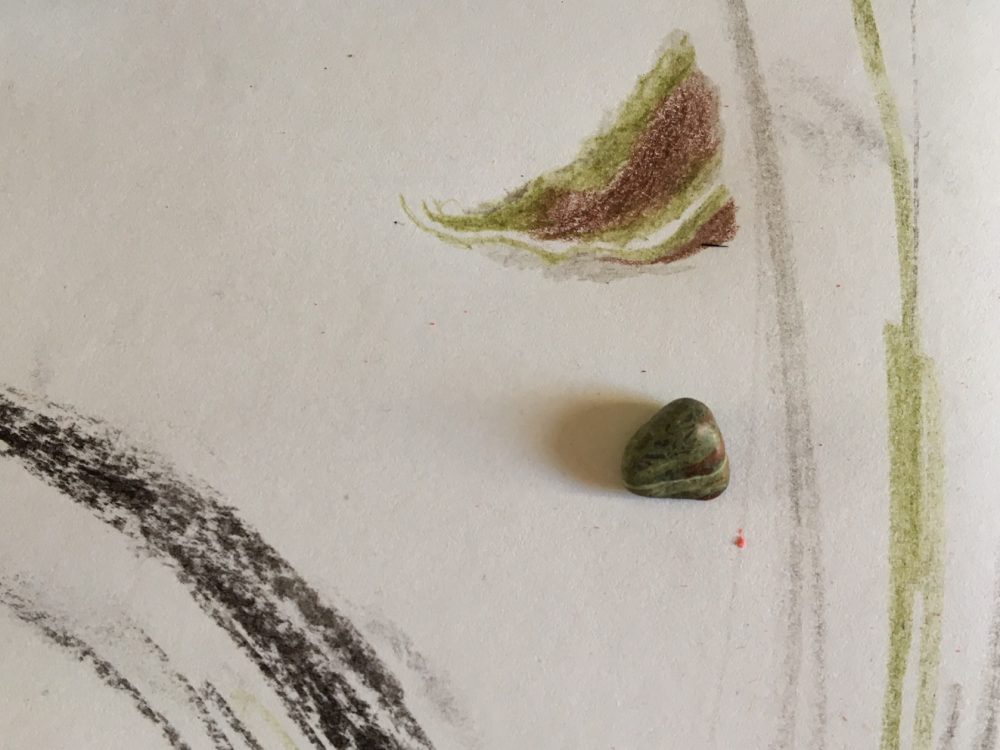
Session Two: Imaginative Drawing
I deliberately left several days between these drawing sessions as I wanted to ensure the memory of the shells and pebbles had faded into the background a bit!
This time, I used a slightly different combination of materials; introducing some water colour and poster paints in addition to the drawing materials. We began by discussing the drawing we did previously and how we looked carefully at the shells in front of us – but that this time, we were going to use our imagination to draw them! This isn’t an exercise in memory recall – but more, an opportunity to use our imagination to create more abstract marks and patterns.
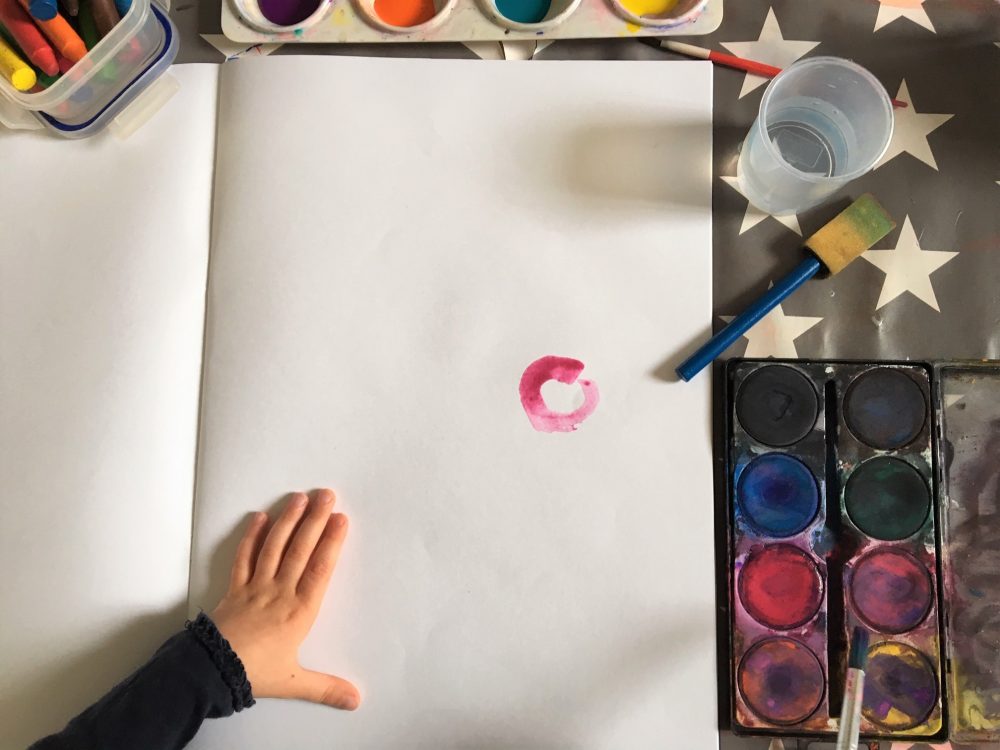
Some things to ask: What can you remember about the shells we looked at? Why do you think some of them had marks and scratches on the surface? What did these marks look like? What patterns, shapes and colours can you remember?
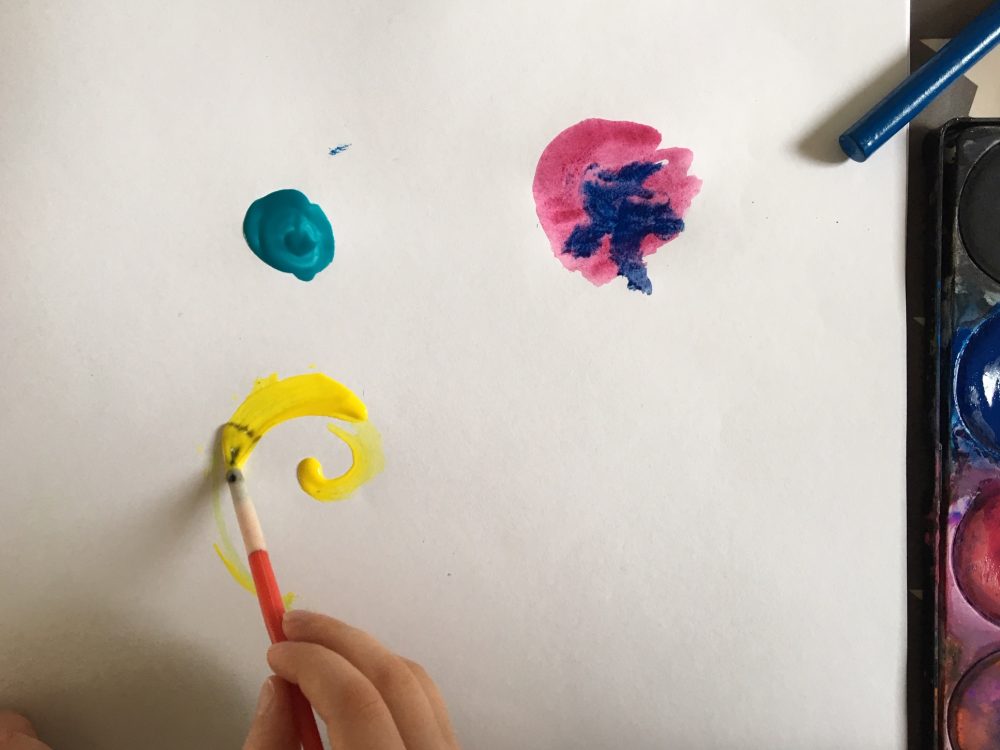
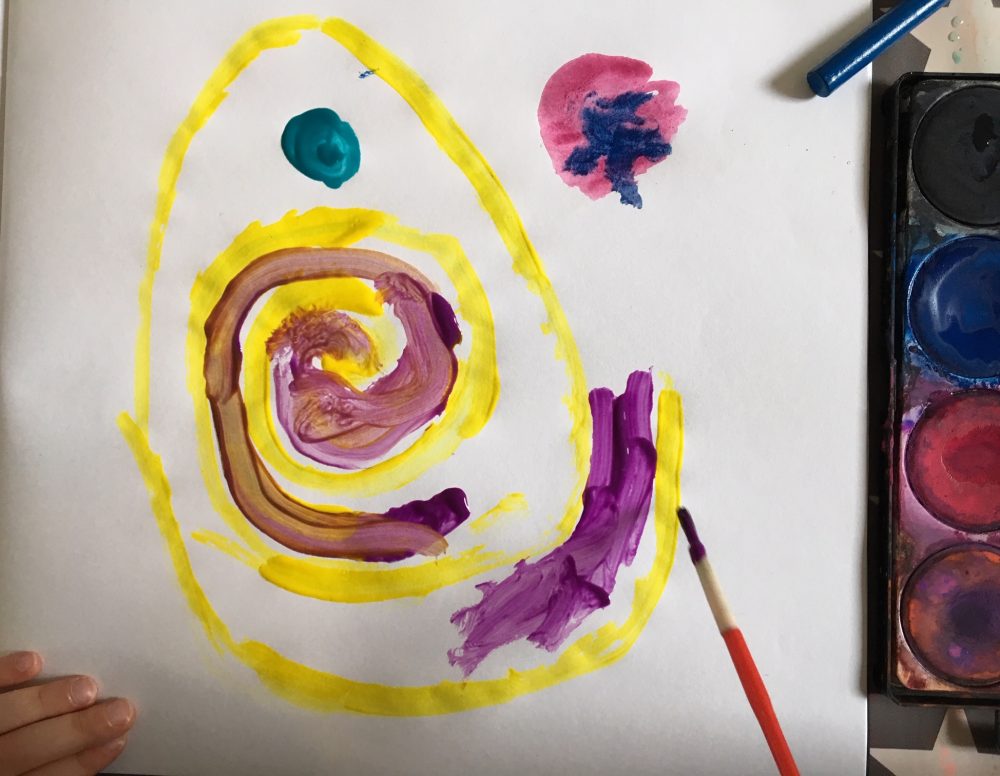
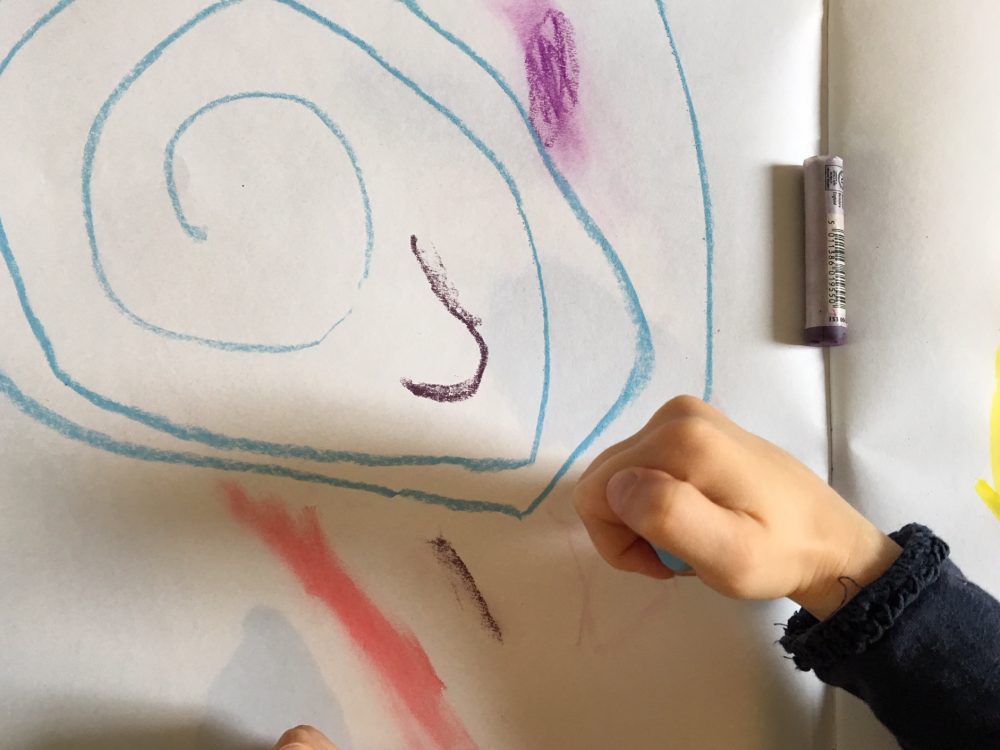
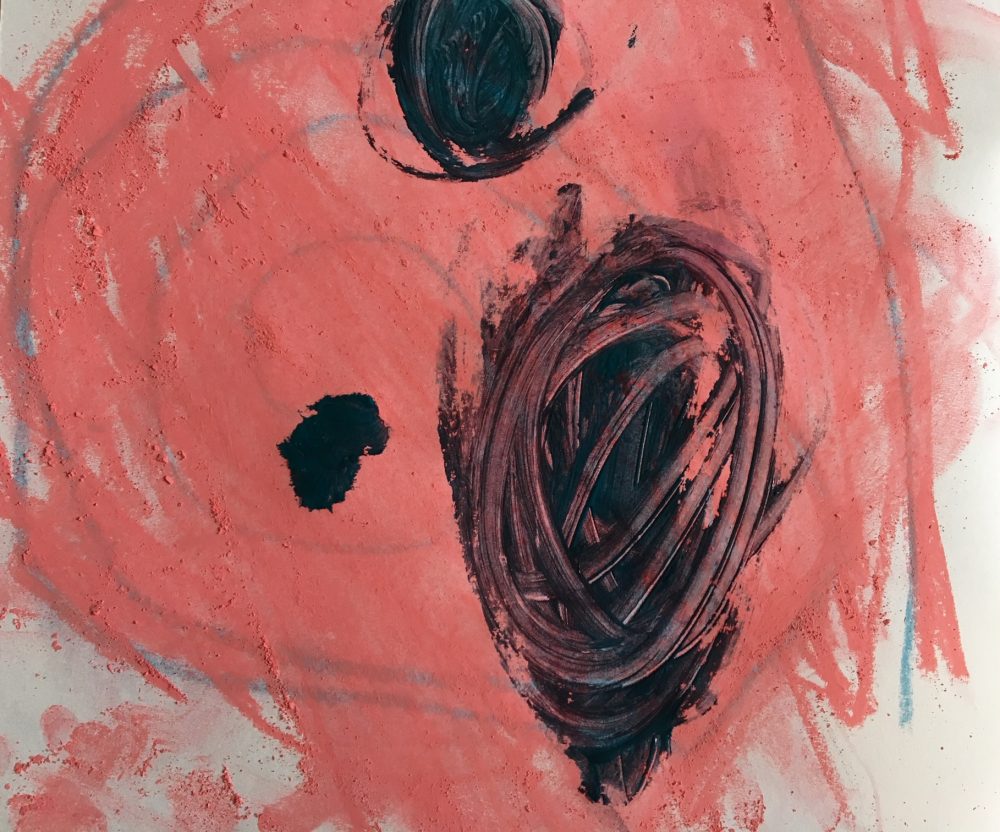
The variation between observational and imaginative drawings may vary according to age. Younger children may produce results that are more similar to one another (as in our case) but older children may have more refined observation and hand to eye skills so may produce some really contrasting results. Whatever the results, this activity could be repeated every month or so to keep children ‘tuned in’ to the different approaches. Vary the materials a little each time, and encourage choice and expression. Above all – enjoy!
You can find more of Rachel’s resources here
